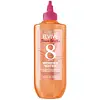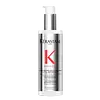What's inside
What's inside
 Key Ingredients
Key Ingredients

 Benefits
Benefits

 Concerns
Concerns

 Ingredients Side-by-side
Ingredients Side-by-side

Propylene Glycol
HumectantAlcohol Denat.
AntimicrobialMyristyl Alcohol
EmollientWater
Skin ConditioningParfum
MaskingDicaprylyl Carbonate
EmollientCetrimonium Chloride
AntimicrobialBehentrimonium Chloride
PreservativeIsopropyl Alcohol
SolventHexyl Cinnamal
PerfumingBenzyl Salicylate
PerfumingLinalool
PerfumingBenzyl Alcohol
PerfumingLimonene
PerfumingAlpha-Isomethyl Ionone
PerfumingHydroxypropyltrimonium Hydrolyzed Wheat Protein
Skin ConditioningCoumarin
PerfumingCitronellol
PerfumingHydroxycitronellal
PerfumingGeraniol
PerfumingTocopherol
AntioxidantArginine PCA
HumectantPhenoxyethanol
PreservativePropylene Glycol, Alcohol Denat., Myristyl Alcohol, Water, Parfum, Dicaprylyl Carbonate, Cetrimonium Chloride, Behentrimonium Chloride, Isopropyl Alcohol, Hexyl Cinnamal, Benzyl Salicylate, Linalool, Benzyl Alcohol, Limonene, Alpha-Isomethyl Ionone, Hydroxypropyltrimonium Hydrolyzed Wheat Protein, Coumarin, Citronellol, Hydroxycitronellal, Geraniol, Tocopherol, Arginine PCA, Phenoxyethanol
Water
Skin ConditioningGlycerin
HumectantPropylene Glycol
HumectantGlycine
BufferingCitric Acid
BufferingSodium Hydroxide
BufferingParfum
MaskingCetrimonium Chloride
AntimicrobialPEG-40 Hydrogenated Castor Oil
EmulsifyingPolysorbate 20
EmulsifyingPolysorbate 80
EmulsifyingPhenoxyethanol
PreservativeHydrolyzed Vegetable Protein Pg-Propyl Silanetriol
Skin ConditioningQuaternium-80
Limonene
PerfumingHydroxypropyl Guar
Emulsion StabilisingHydroxypropyl Guar Hydroxypropyltrimonium Chloride
Linalool
PerfumingSodium Benzoate
MaskingCitral
PerfumingPotassium Sorbate
PreservativeWater, Glycerin, Propylene Glycol, Glycine, Citric Acid, Sodium Hydroxide, Parfum, Cetrimonium Chloride, PEG-40 Hydrogenated Castor Oil, Polysorbate 20, Polysorbate 80, Phenoxyethanol, Hydrolyzed Vegetable Protein Pg-Propyl Silanetriol, Quaternium-80, Limonene, Hydroxypropyl Guar, Hydroxypropyl Guar Hydroxypropyltrimonium Chloride, Linalool, Sodium Benzoate, Citral, Potassium Sorbate
Ingredients Explained
These ingredients are found in both products.
Ingredients higher up in an ingredient list are typically present in a larger amount.
This ingredient is a preservative, antimicrobial, and emulsifier. It is often used in cosmetics for its ability to cleanse, condition, and reduce static.
Cetrimonium chloride is a quaternary ammonium salt, meaning it has a water-soluble structure.
Limonene is a fragrance that adds scent and taste to a formulation.
It's found in the peel oil of citrus fruits and other plants such as lavender and eucalyptus. The scent of limonene is generally described as "sweet citrus".
Limonene acts as an antioxidant, meaning it helps neutralize free radicals.
When exposed to air, oxidized limonene may sensitize the skin. Because of this, limonene is often avoided by people with sensitive skin.
The term 'fragrance' is not regulated in many countries. In many cases, it is up to the brand to define this term. For instance, many brands choose to label themselves as "fragrance-free" because they are not using synthetic fragrances. However, their products may still contain ingredients such as essential oils that are considered a fragrance.
Learn more about LimoneneLinalool is a fragrance and helps add scent to products. It's derived from common plants such as cinnamon, mint, citrus, and lavender.
Like Limonene, this ingredient oxidizes when exposed to air. Oxidized linalool can cause allergies and skin sensitivity.
This ingredient has a scent that is floral, spicy tropical, and citrus-like.
Learn more about LinaloolParfum is a catch-all term for an ingredient or more that is used to give a scent to products.
Also called "fragrance", this ingredient can be a blend of hundreds of chemicals or plant oils. This means every product with "fragrance" or "parfum" in the ingredients list is a different mixture.
For instance, Habanolide is a proprietary trade name for a specific aroma chemical. When used as a fragrance ingredient in cosmetics, most aroma chemicals fall under the broad labeling category of “FRAGRANCE” or “PARFUM” according to EU and US regulations.
The term 'parfum' or 'fragrance' is not regulated in many countries. In many cases, it is up to the brand to define this term.
For instance, many brands choose to label themselves as "fragrance-free" because they are not using synthetic fragrances. However, their products may still contain ingredients such as essential oils that are considered a fragrance by INCI standards.
One example is Calendula flower extract. Calendula is an essential oil that still imparts a scent or 'fragrance'.
Depending on the blend, the ingredients in the mixture can cause allergies and sensitivities on the skin. Some ingredients that are known EU allergens include linalool and citronellol.
Parfum can also be used to mask or cover an unpleasant scent.
The bottom line is: not all fragrances/parfum/ingredients are created equally. If you are worried about fragrances, we recommend taking a closer look at an ingredient. And of course, we always recommend speaking with a professional.
Learn more about ParfumPhenoxyethanol is a preservative that has germicide, antimicrobial, and aromatic properties. Studies show that phenoxyethanol can prevent microbial growth. By itself, it has a scent that is similar to that of a rose.
It's often used in formulations along with Caprylyl Glycol to preserve the shelf life of products.
Propylene Glycol is an odorless, colorless liquid. As a humectant, it helps skin retain moisture. It also aids in delivering active ingredients.
Another role of this ingredient is preventing a product from melting or freezing. Propylene glycol also adds antimicrobrial properties to a product, elongating product lifespan.
This ingredient is considered an organic alcohol and commonly added into both cosmetics and foods.
Those with sensitive skin or conditions may develop a rash when using this ingredient.
Learn more about Propylene GlycolWater. It's the most common cosmetic ingredient of all. You'll usually see it at the top of ingredient lists, meaning that it makes up the largest part of the product.
So why is it so popular? Water most often acts as a solvent - this means that it helps dissolve other ingredients into the formulation.
You'll also recognize water as that liquid we all need to stay alive. If you see this, drink a glass of water. Stay hydrated!
Learn more about Water